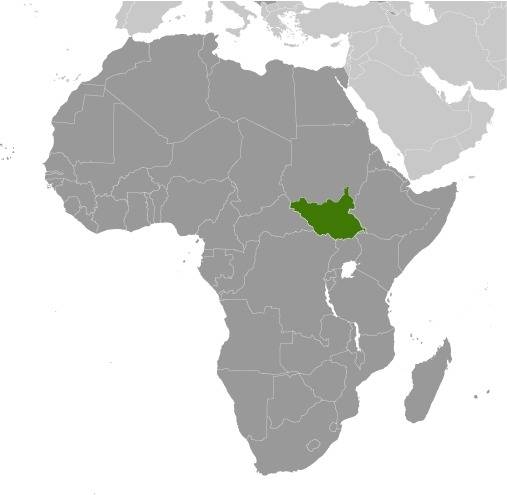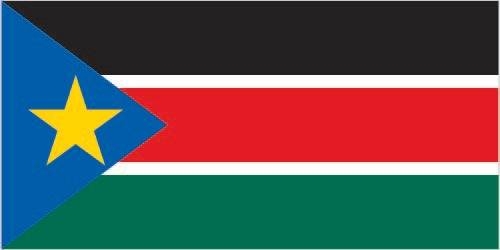Country Summary




Introduction
Background
British explorers established the colony of Equatoria in 1870, which composed most of what is now South Sudan. When Sudan gained its independence in 1956, it was declared that the southerners would be able to participate fully in the political system. A referendum, held in January 2011, was in favor of secession and South Sudan gained independence on 9 July 2011.
Geography
Area
total: 644,329 sq km
Climate
hot with seasonal rainfall influenced by the annual shift of the Inter-Tropical Convergence Zone; rainfall heaviest in upland areas of the south and diminishes to the north
Natural resources
hydropower, fertile agricultural land, gold, diamonds, petroleum, hardwoods, limestone, iron ore, copper, chromium ore, zinc, tungsten, mica, silver
People and Society
Population
11,544,905 (2022 est.)
Ethnic groups
Dinka (Jieng) approximately 35-40%, Nuer (Naath) approximately 15%, Shilluk (Chollo), Azande, Bari, Kakwa, Kuku, Murle, Mandari, Didinga, Ndogo, Bviri, Lndi, Anuak, Bongo, Lango, Dungotona, Acholi, Baka, Fertit (2011 est.)
Languages
English (official), Arabic (includes Juba and Sudanese variants), ethnic languages include Dinka, Nuer, Bari, Zande, Shilluk
Religions
Christian 60.5%, folk religion 32.9%, Muslim 6.2%, other <1%, unaffiliated <1% (2020 est.)
Population growth rate
4.91% (2022 est.)
Government
Government type
presidential republic
Capital
name: Juba
Executive branch
chief of state: President Salva KIIR Mayardit (since 9 July 2011); Vice Presidents TABAN Deng Gai, Riek MACHAR Teny Dhurgon, James Wani IGGA, Rebecca Nyandeng Chol GARANG de Mabior, Hussein ABDELBAGI Ayii (since 22 February 2020); note - the president is both chief of state and head of government; TABAN served as First Vice President from 23 July 2016 to February 2020
head of government: President Salva KIIR Mayardit (since 9 July 2011); Vice Presidents TABAN Deng Gai, Riek MACHAR Teny Dhurgon, James Wani IGGA, Rebecca Nyandeng Chol GARANG de Mabior, Hussein ABDELBAGI Ayii (since 22 February 2020); note - TABAN served as First Vice President from 23 July 2016 to February 2020
Legislative branch
description: bicameral National Legislature consists of:
Council of States, pending establishment as stipulated by the 2018 peace deal
Transitional National Legislative Assembly (TNLA), established on 4 August 2016, in accordance with the August 2015 Agreement on the Resolution of the Conflict in the Republic of South Sudan; note - originally 400 seats; the TNLA was expanded to 550 members from 400 and reestablished in May 2020 under the 2018 peace agreement
Economy
Economic overview
low-income, oil-based Sahelian economy; extreme poverty and food insecurity; COVID-19 and ongoing violence threaten socioeconomic potential; environmentally fragile; ongoing land and property rights issues; natural resource rich but lacks infrastructure
Real GDP (purchasing power parity)
$20.01 billion (2017 est.)
Real GDP per capita
$1,600 (2017 est.)
Agricultural products
milk, sorghum, vegetables, cassava, goat milk, fruit, beef, sesame seed, sheep milk, mutton
Exports
$3.01 billion (2019 est.)
Exports - partners
China 88%, United Arab Emirates 5% (2019)
Exports - commodities
crude petroleum, gold, forage crops, lumber, insect resins (2019)
Imports
$3.07 billion (2019 est.)
Imports - partners
United Arab Emirates 37%, Kenya 18%, China 18% (2019)
Imports - commodities
cars, delivery trucks, packaged medicines, foodstuffs, clothing and apparel (2019)
Exchange rates
South Sudanese pounds (SSP) per US dollar -
Page last updated: Tuesday, August 02, 2022